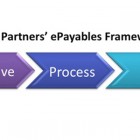[Editor’s Note: Ardent Partners recently published our annual AP-themed report, The State of ePayables 2018: The Future of AP is Now. Today’s article is part of an on-going series focused on the report’s key findings. If you would like to get the full report, it is available for download here (registration required).]
“Perception” has long been one of the biggest issues holding Accounts Payable (“AP”) groups down within the organizational hierarchy of an enterprise. For many years, executives failed to see the larger potential of AP, based on its history as a mainly tactical unit, and generally ignored the department’s needs for new resources, attention, and systems. For far too long AP teams were perceived as a severely tactical function that served little purpose outside of processing invoices and handling supplier payments. The hard truth that no AP professional wanted to hear is that AP’s everyday operational processes were not adding value in comparison with other more strategic groups, such as treasury, procurement, IT, or human capital management.
However, the long-held perception of AP appears to be slowly, but surely changing for the better. One hopeful mark of things to come (and the general future of AP and how it will fit into the modern, digitized business world) is the changing tide of perception captured in this year’s “State of ePayables 2018: The Future of AP is Now” Research Report published by Ardent Partners earlier this year (click here to download your copy today). Our research has discovered that, in 2018, 52% of organizations perceive the AP function as either “very” or “exceptionally” valuable to organizational operations. This new majority is significantly higher than the 33% who saw AP the same way just two years ago, and indicates that a new chapter has started for the industry.
While AP’s momentum continues to build as seen in the graphic below, there is more work to be done to keep improving perceptions and have AP viewed more favorably within the enterprise.

Everyone has heard the saying that ‘Perception Is Reality.’ If we subscribe to this, and most everyone I know does, then in order to continue to change the ‘perception’ of the AP department, what we need to do is change the ‘reality’. How do we increase the number of people who view AP as ‘very’ or ‘exceptionally’ valuable from 52% today to closer to 100%? The answer lies within AP itself. AP must continue to automate all facets of ePayables from invoice sending, to processing, and through to payment. Once the tactical tasks are automated, AP can move on becoming more strategic and looking at ways to add value to the greater organization. AP can then start to mine the vast financial data it is sitting on to become an information hub for the rest of the enterprise.
Along with this, AP must do a much better job communicating and collaborating. I wrote about the importance of both of these a couple of weeks ago in my article on ‘3 Things AP Can Do To Become More Strategic’. To change the ‘perception of AP’ and create a new ‘reality’, it needs to work more closely with other parts of the organization and regularly share the value and accomplishments that AP achieves.
Conclusion
How AP is viewed in your organization and what it can do is largely based on perception. Take time to “re-introduce” AP, its services, offerings, capabilities, and most important the value it adds, to the rest of the organization. Perception seldom keeps pace with reality, so the onus is on you, AP, to educate others and let them know about your developments, accomplishments, and new, more strategic focus. By re-framing everyone’s’ perception of AP, you can create a new “reality”.
RELATED ARTICLES:
Download the State of ePayables 2018 Report!
The State of ePayables 2018: Leveraging Technology in AP – 4 Steps to Take Now
The State of ePayables 2018: 3 Things AP Can Do to Be More Strategic
The State of ePayables 2018: It’s Time to Say Goodbye to Paper Checks



